HHO ENGINE CARBON CLEANER
INSIDE ENGINE COMPARTMENT DURING COMBUSTION, Carbon deposits are produced as a result of incomplete combustion in the cylinders and can affect the smooth running of an engine.
Carbon cleaning of engines, specifically internal combustion engines, is a maintenance procedure aimed at removing carbon deposits or buildup from various engine components. This process can offer several benefits to your vehicle or equipment, ranging from improved performance and fuel efficiency to prolonged engine life.
Here’s a comprehensive overview of why carbon cleaning is essential:
- Improved Fuel Efficiency: Carbon deposits in the engine can disrupt the combustion process by altering the air-
fuel mixture and reducing the efficiency of the engine. This can lead to decreased fuel economy, causing you to spend more on gasoline or diesel.
2.Enhanced Engine Performance: Carbon buildup can negatively impact engine performance by reducing power output and responsiveness. By removing these deposits, you can restore your engine’s original performance levels.
- Prevents Engine Knocking and Pinging: Carbon deposits can create hot spots in the combustion chamber, leading to pre-ignition, knocking, and pinging. Carbon cleaning helps eliminate these issues, leading to smoother and quieter engine operation.
- Prolongs Engine Life: A cleaner engine is generally a healthier engine. Reducing carbon buildup can help extend the life of your engine and its components, such as valves, pistons, and spark plugs, by reducing wear and tear caused by deposits.
- Emission Reduction: Cleaner engines produce fewer harmful emissions, which is beneficial for the environment. Reduced carbon deposits result in lower levels of hydrocarbons and carbon monoxide in exhaust gases.
- Restored Engine Power: As carbon deposits accumulate in the intake valves and exhaust system, airflow can be restricted, leading to reduced power output. Carbon cleaning can restore proper airflow and maximize engine power.
- Smoother Idle and Acceleration: Engines with heavy carbon buildup often exhibit rough idling and sluggish acceleration. Carbon cleaning can help.smoothens these aspects of engine operation.
- Prevents Misfires: Carbon deposits can interfere with the spark plug’s ability to ignite the air-fuel mixture consistently. Removing these deposits can prevent misfires, ensuring proper combustion and engine reliability.
- Reduces Maintenance Costs: Regular carbon cleaning can reduce the need for costly repairs and replacements of engine components. It’s a proactive maintenance measure that can save you money in the long run.
- Avoids Expensive Repairs: In extreme cases, excessive carbon buildup can lead to severe engine damage, such as valve or piston damage. Carbon cleaning can prevent these costly repair jobs.
- Preserves Turbochargers: Turbochargers are susceptible to carbon buildup, which can reduce their efficiency and eventually lead to failure. Carbon cleaning can extend the life of turbochargers.
- Enhances Overall Driving Experience: A cleaner engine not only performs better but also runs smoother and quieter. This can lead to a more enjoyable driving experience.
- Optimizes Combustion Efficiency: Carbon cleaning ensures that the combustion process operates at its best, which can lead to more complete and efficient burning of fuel.
- Saves Money on Fuel: Improved fuel efficiency directly translates to savings at the pump, making carbon cleaning a cost-effective maintenance practice.
- Environmental Responsibility: Keeping your engine clean and running efficiently contributes to reducing the carbon footprint associated with your vehicle or equipment.
To conclude, carbon cleaning is a vital maintenance procedure that can significantly benefit your engine, your wallet, and the environment. Regularly removing carbon deposits from your engine’s components helps ensure optimal performance, fuel efficiency, and longevity while reducing harmful emissions and the risk of expensive repairs. It’s a preventive measure that can keep your engine running smoothly and efficiently.
HHO carbon cleaning machines use distilled water and electrolysis to produce Oxyhydrogen gas, which is then
introduced into the air intake of the engine. The reaction during the combustion causes a phase change in carbon deposits, returning to a gaseous state, which is then expelled through the exhaust system. The carbon deposit will be burnt and can be exhausted from exhaust pipe after a 20 minutes burning reaction . The benefits of HHO carbon cleaning machines include improved vehicle performance, economy, and emissions.
There are no disadvantages of using HHO carbon cleaning machines. In fact, the hydrogen-oxygen mixture is clean and safe and will not damage any engine parts, oil seals, gaskets and the engine .
Working principle.
An HHO machine, also known as a
hydrogen generator or an electrolyzer, is a device that produces a mixture of hydrogen and oxygen gases (H2 and O2) through the process of electrolysis. This mixture is commonly referred to as HHO gas and can be used in various applications, including as a supplement to fuel in internal combustion engines for improved fuel efficiency and reduced emissions. Here’s an overview of the working process of an HHO machine and how it generates HHO gas:
Components of an HHO Machine:
- Electrolyte Solution: Typically, a mixture of distilled water and an electrolyte (such as potassium hydroxide or sodium hydroxide) is used as the electrolyte solution. This solution facilitates the electrolysis process.
- Electrodes: The HHO machine has two electrodes, usually made of stainless steel or other conductive materials. One electrode is called the cathode, and the other is the anode.
5.Power Supply: An electrical power source, often a DC power supply or a car battery, is connected to the electrodes to provide the necessary voltage for the electrolysis process.
Working Process of an HHO Machine:
Electrolysis: When the HHO machine is turned on, an electric current is passed through the electrolyte solution, causing electrolysis to occur. Electrolysis is a chemical reaction in which water (H2O) is split into its constituent elements, hydrogen (H2) and oxygen (O2), using electrical energy. The process can be represented by the following equation:
2H2O(l) → 2H2(g) + O2(g)
- The cathode attracts positively charged hydrogen ions (H+) and reducesthem to form hydrogen gas (H2).
- The anode attracts negatively charged hydroxide ions (OH-) and oxidizes them to form oxygen gas (O2).
- Gas Collection: The H2 and O2 gases produced during electrolysis are collected separately. Typically, they are collected in separate chambers to prevent them from mixing until they are ready for use.
- Control and Safety Mechanisms: HHO machines often have control systems to regulate the rate of gas production and ensure safe operation. These systems may include pressure relief valves, temperature sensors, and current-limiting circuits.
- Gas Delivery: Once collected, the HHO gas can be delivered to the application where it is used. In
automotive applications, for example, the HHO gas is often introduced into the engine’s air intake or combustion chamber to mix with the fuel for combustion.
Applications of HHO Gas:
- Fuel Enhancement: HHO gas can be used as a supplement to traditional fuels, such as gasoline or diesel, in internal combustion engines. This is sometimes claimed to improve fuel efficiency and reduce emissions, although the effectiveness of such systems can vary.
- Welding: HHO gas can be used for various types of welding and cutting processes, where it serves as a fuel source in flame torches.
- Lab and Industrial Processes: HHO gas can be used in various laboratory experiments and industrial applications that require a clean source of hydrogen and oxygen gases.
Description
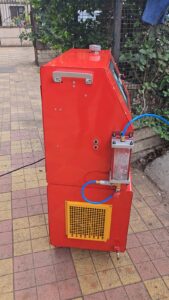
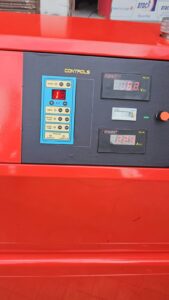
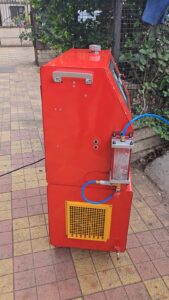


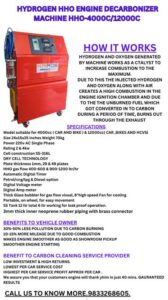
HYDROGEN HHO ENGINE DECARBONIZER MACHINE HHO-4000C/12000C
SUITABLE FOR PETROL/CNG/LPG & DIESEL ENGINE
HOW IT WORKS
HYDROGEN AND OXYGEN GENERATED BY MACHINE WORKS AS A CATALYST TO INCREASE COMBUSTION TO THE MAXIMUM.
DUE TO THIS THE INJECTED HYDROGEN AND OXYGEN ALONG WITH AIR CREATES A HIGH COMBUSTION IN THE ENGINE IGNITION CHAMBER AND DUE TO THE THE UNBURNED FUEL WHICH GOT CONVERTED IN TO CARBON DURING A PERIOD OF TIME, BURNS OUT THROUGH THE EXHAUST
SPECIFICATIONS.
Model suitable for 4000cc ( CAR AND BIKE ) & 12000cc( CAR ,BIKES AND HCVS)
Size 24x15x35 inches Weight 70kg
Power 220v AC Single Phase
Rating 2 & 4kw
Cell construction SS-316L
DRY CELL TECHNOLOGY
Plate thickness 1mm, 29 & 49 plates
HHO gas flow 400-600 & 900-1200 ltr/hr
Automatic Digital Timer
Petrol/cng/lpg & Diesel option
Digital Voltage meter
Digital Amp meter
Thick Glass bubbler for gas flow visual, 8″high speed Fan for cooling
Portable, on wheel, for easy movement
SS Tank 12 ltr total 6 ltr working for leak proof operation.
3mm thick inner neoprene rubber piping with brass connector
BENEFITS TO VEHICLE OWNER
30%-50% LESS POLLUTION DUE TO CARBON BURNING
10-15% MORE MILEAGE DUE TO GOOD COMBUSTION
MAKES ENGINE SMOOTHER AS GOOD AS SHOWROOM PICKUP
SMOOTHER ENGINE STARTING
BENEFIT TO CARBON CLEANING SERVICE PROVIDER
LOW INVESTMENT & HIGH RETURNS.
LOWEST PER CAR SERVICE COST
HIGHEST PER CAR SERVICE PROFIT APPROX PER CAR 900/-
We assure you that your customers engine will thank yhim in just 40 mins. GAURANTEED RESULTS
call us to know more…
TERMS AND CONDITIONS APPLY







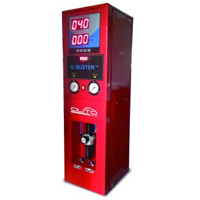
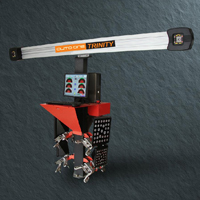





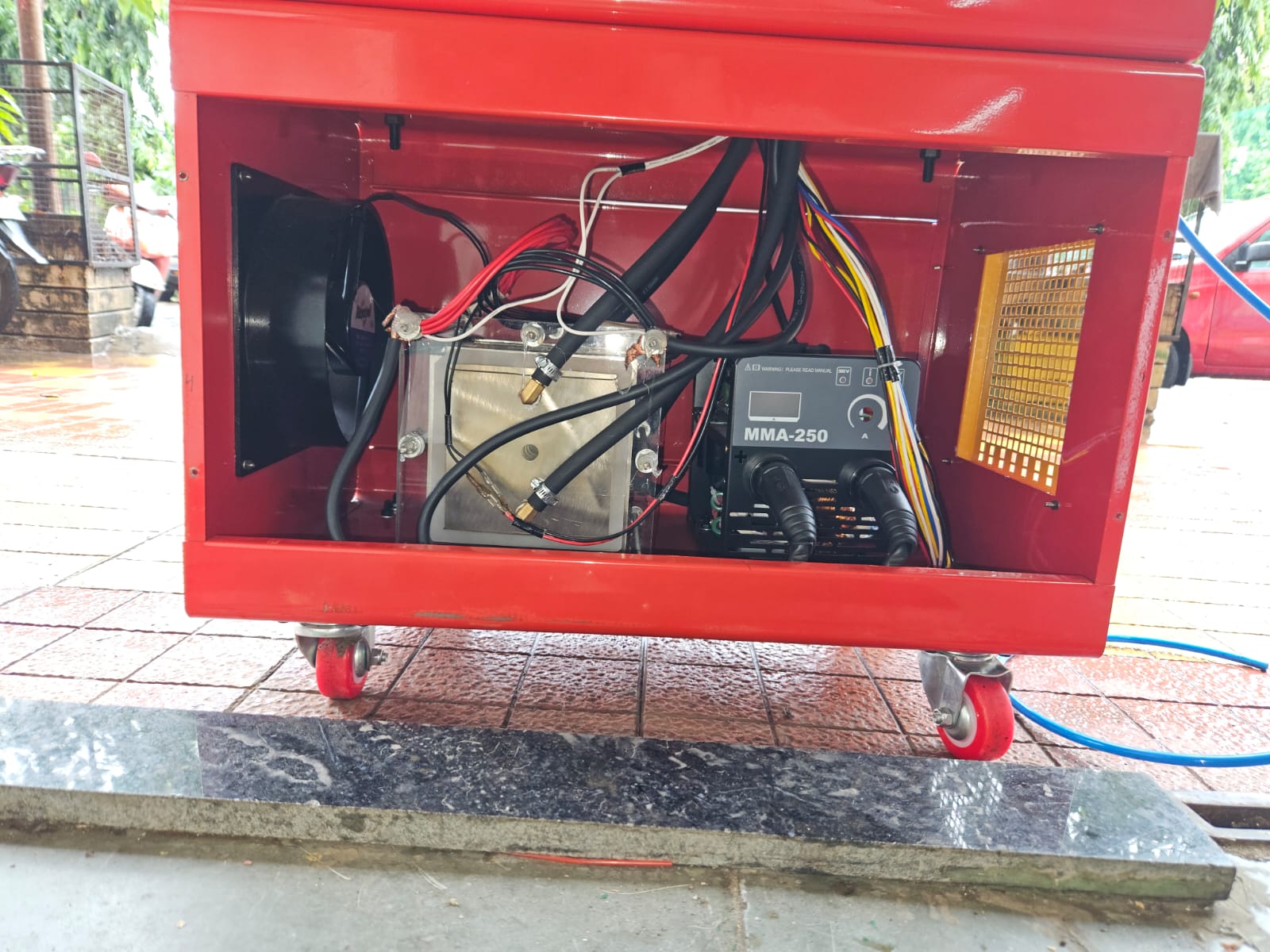



Reviews
There are no reviews yet.